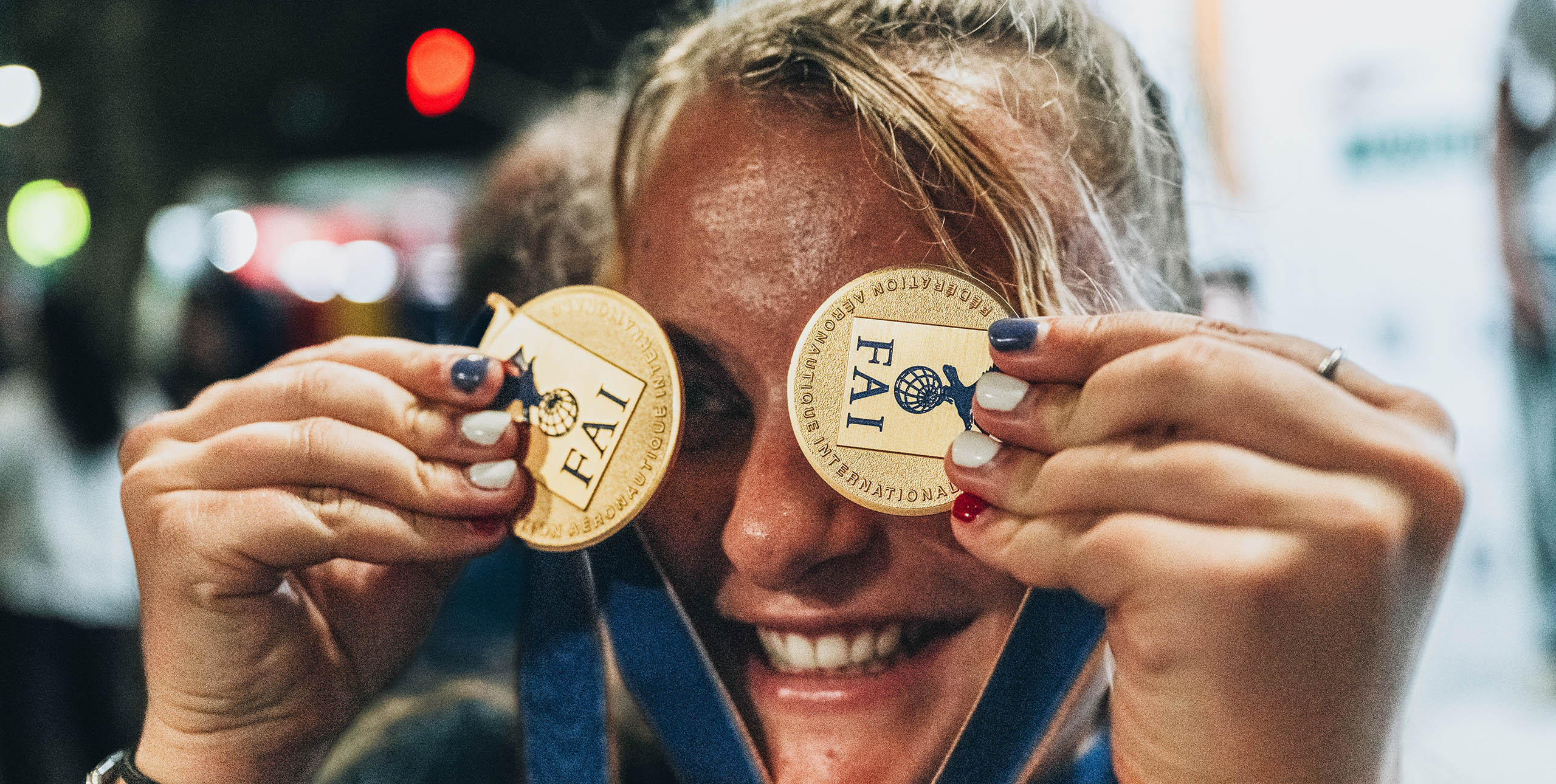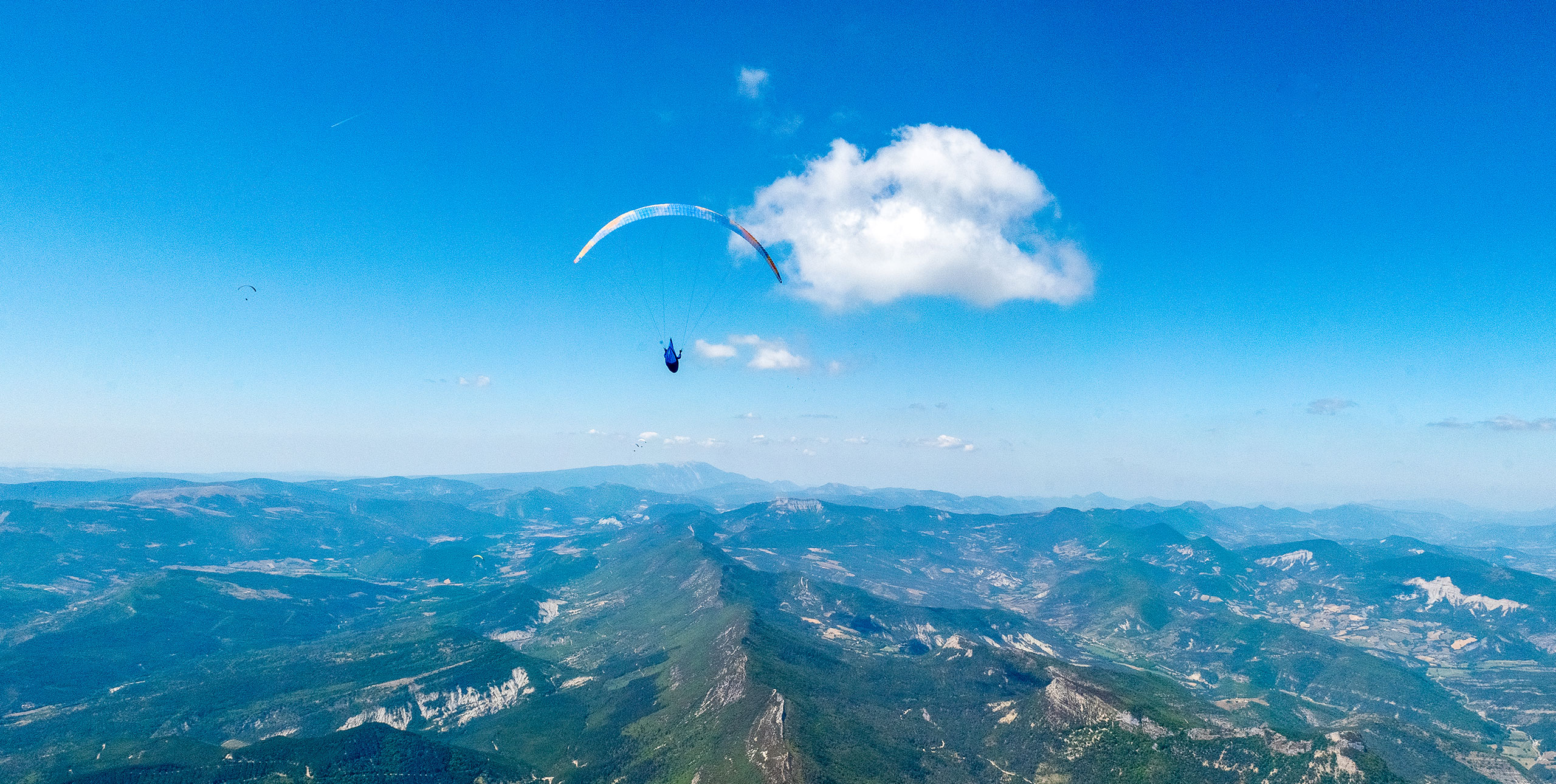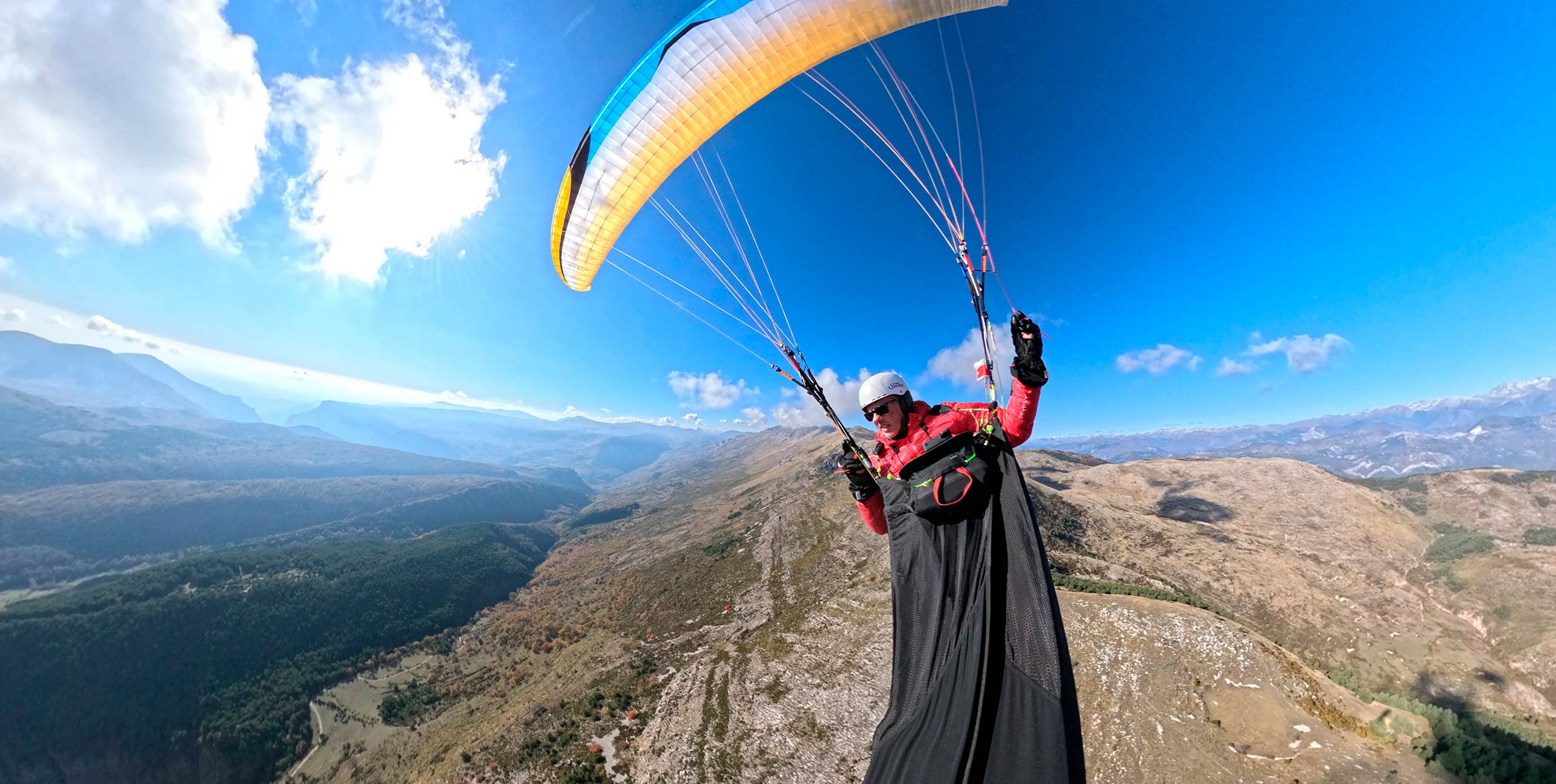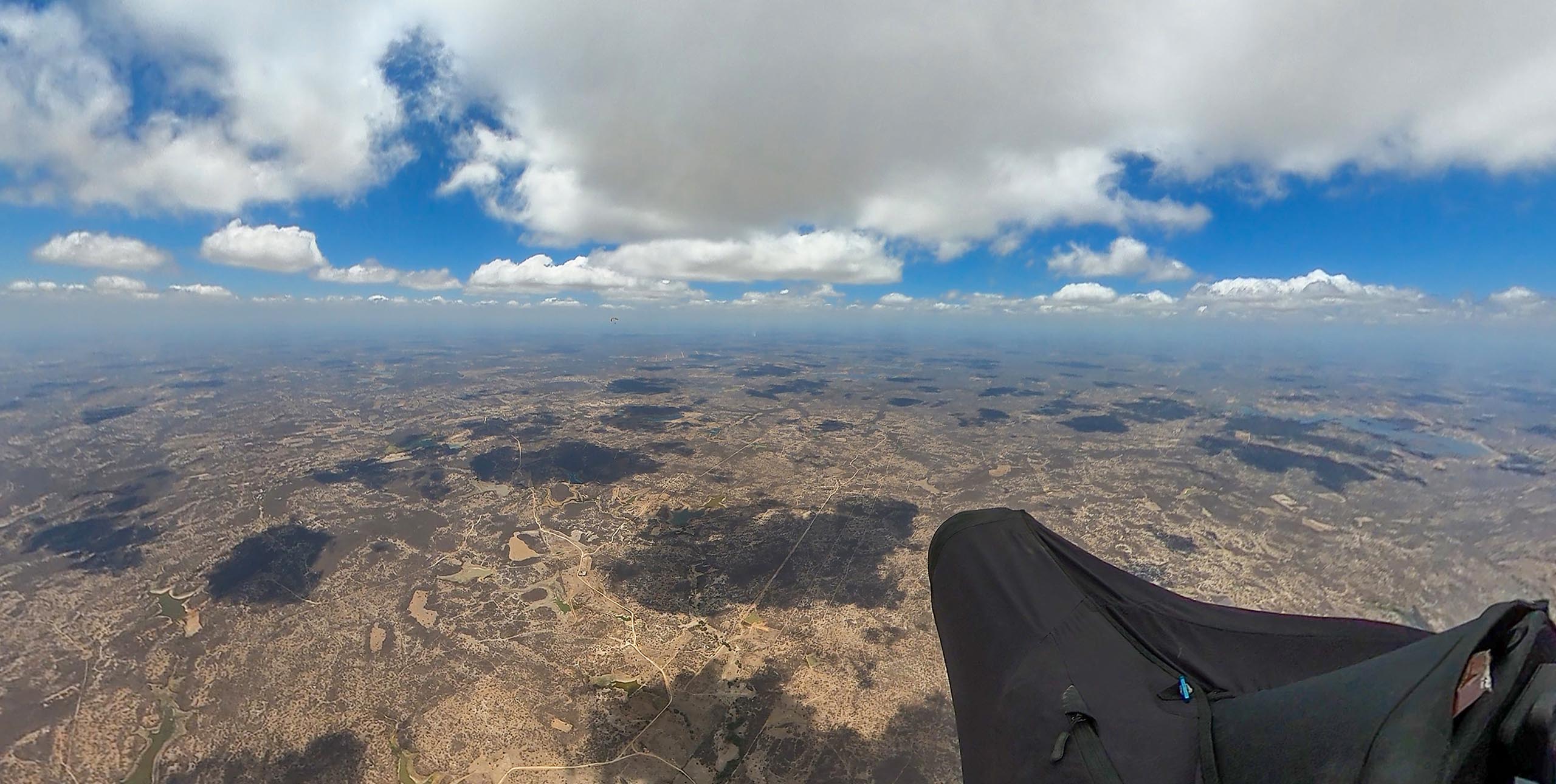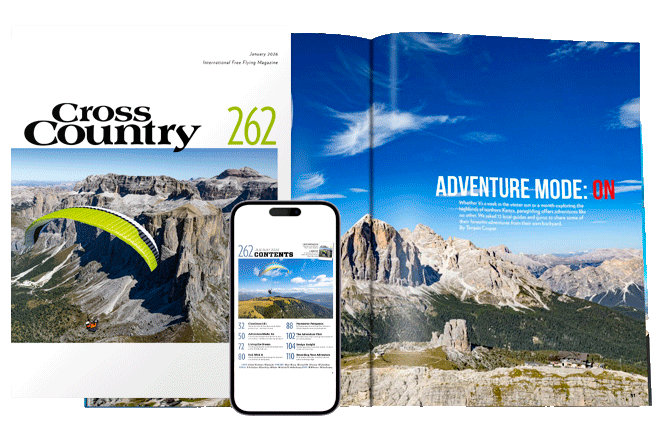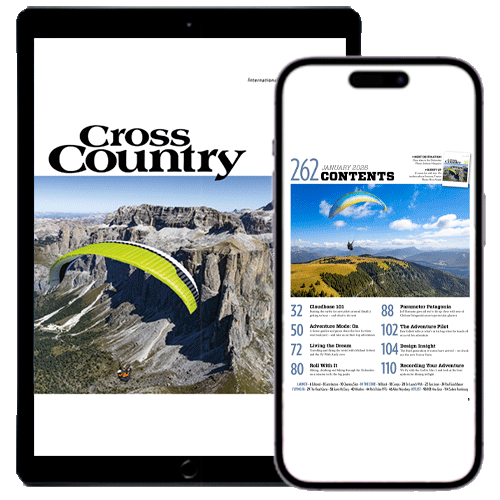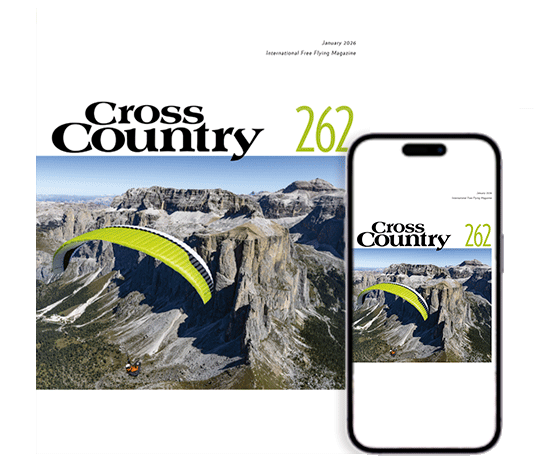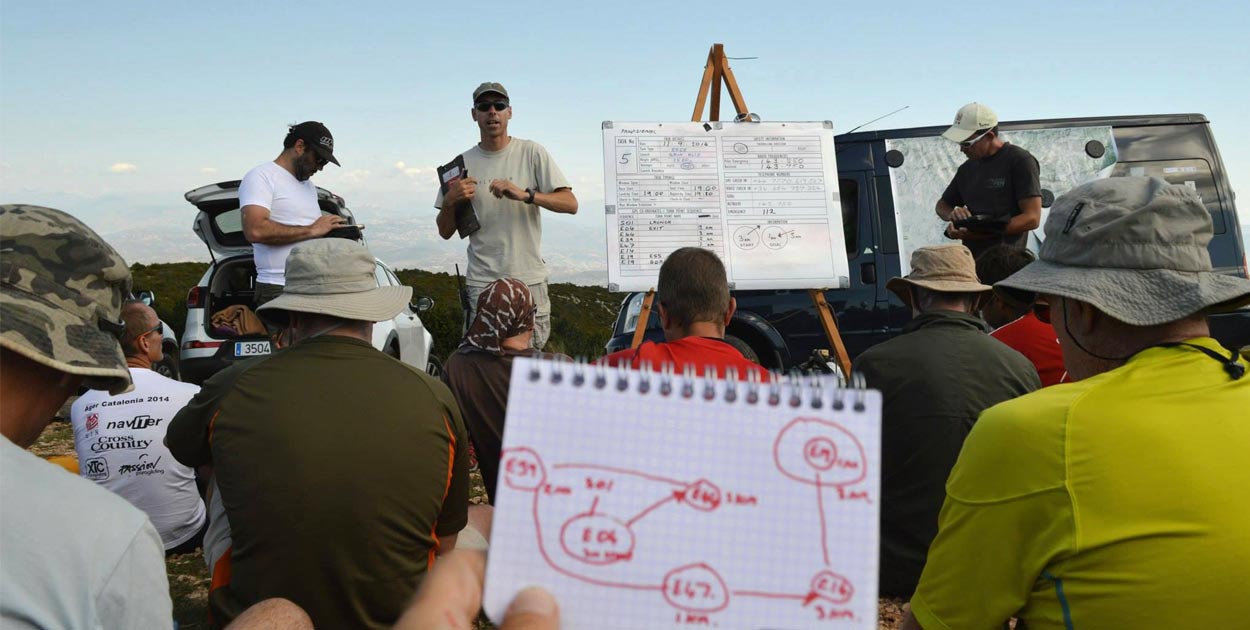
Here’s our five-minute guide to how paragliding competitions work and how they are scored.
TASKS AND TURNPOINTS
A competition is made up of a series of tasks, generally one a day although adventure races like the Red Bull X-Alps can comprise one task that runs over several days or even weeks. First XC competitions typically run for a week, with a different task set each day.
A task is made up of a series of turnpoints or waypoints (places) that you have to navigate round to reach a goal. Think of it like a sailing race where the boats go round a series of buoys. Once the final waypoint has been passed, you then fly to a defined goal. In simple terms the first person to cross the goal line is the winner.
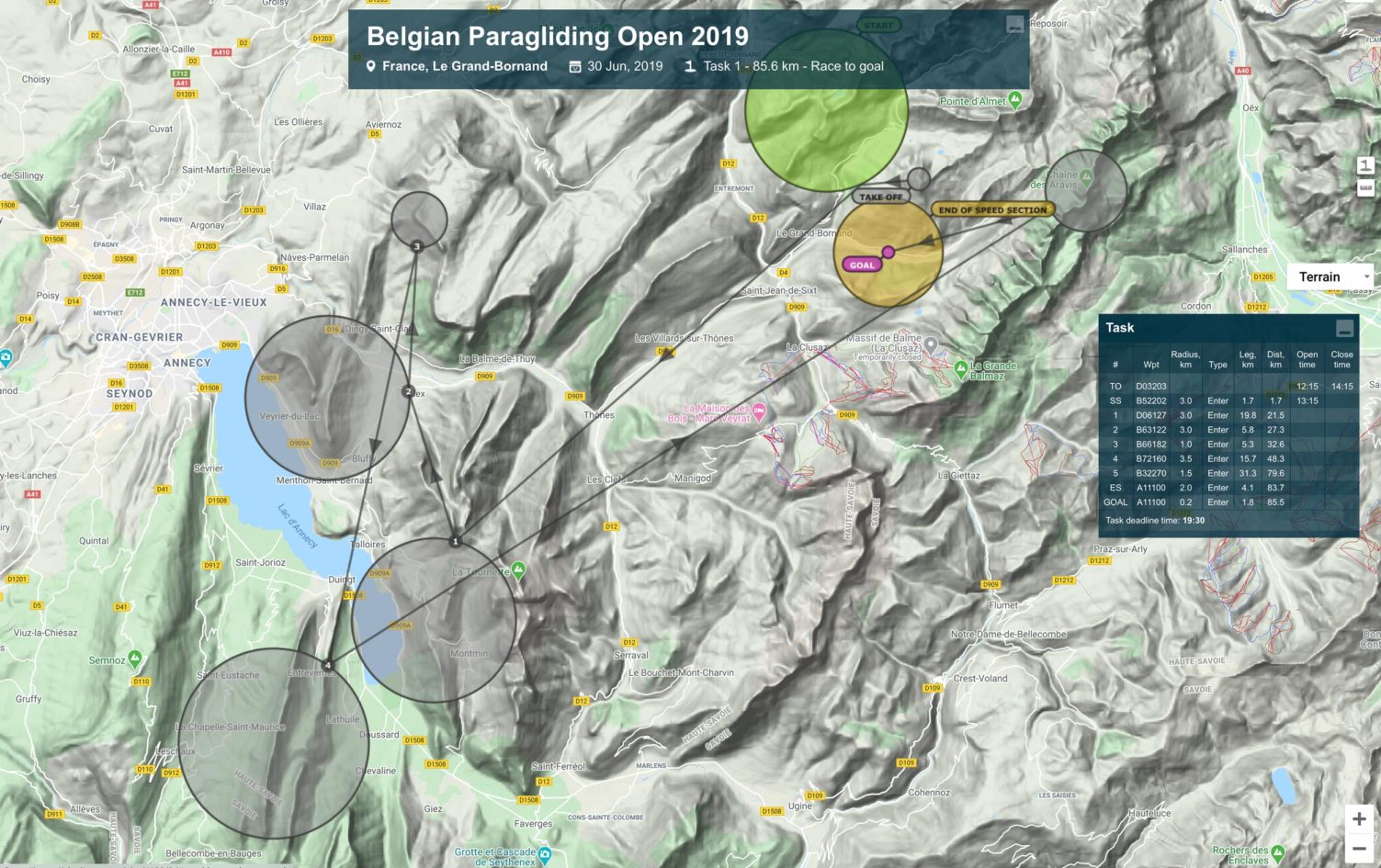
TURNPOINTS
In the past, pilots had to photograph turnpoints to prove they had flown over them, so turnpoints were recognisable buildings or objects on the ground. These days GPS points are used instead so turnpoints don’t necessarily correspond to recognisable landmarks. The advantages to this are that turnpoints can be placed anywhere, and task-setters can avoid sending pilots to awkward-to-reach places.
A turnpoint is normally defined as a cylinder around a central point. Pilots have to fly into the cylinder and record a tracklog point inside the cylinder to pass it. In the past, cylinders were nearly always 400m radius, but more recently much larger cylinders have become popular as they give pilots greater flexibility over their route choices. Rather than all racing along the same course, pilots can try different routes.
Optimised routes
When you put a task into your instrument it will show the total task distance. Most instruments now also show you the optimised distance. The total distance is the distance you would fly if you went through the centres of the turnpoints. The optimised distance is the shortest distance you can fly by entering each cylinder just enough to validate it.
elements of a task
As well as the individual turnpoints, a task usually has a start gate, speed section and a goal. You will be told launch–window opening and closing times, start time, goal close time and land-by times. All these times need to be noted and understood. One tip is to take a pencil and paper to the briefing so you can note everything down.
START GATES
Most tasks have a start gate in the form of a cylinder that you have to fly into or out of (IN or EXIT) at the designated start time. There is a window during which pilots are allowed to launch, which is usually around two hours. The times of the window opening and closing, and the start time will be given at the briefing, and often a hooter will be used on launch to tell pilots the launch window has opened. Task setters aim to give enough time (usually about an hour) between the window opening and the official race start, to allow all pilots to get into the air safely and into a good position to glide into (or out of) the start cylinder once the start gate opens.
Unless conditions are very weak and there is a risk of going down, it is usually beneficial to get into the air early, to give you enough time to get into a good position ready for the start. Start cylinders are often large (in the example illustrated above, most turnpoints have 3km radius cylinders) to allow pilots to wait without over-crowding. Task setters can sometimes set turnpoints that have to be flown through on the way to the start.
SPEED SECTION
Once the through the start gate, the timer starts. You are in the speed section. The timer stops when you reach the End of Speed Section (ESS). This used to be the goal line, but in the interest of safety it is usually now a turnpoint around 1km before the goal line, so that pilots can proceed to goal safely and avoid racing low to the ground. Even though the timing stops when you hit the ESS, you still have to cross the goal line to get your time points.
TASK SCORING
At its simplest level, the first pilot to pass the ESS is the winner, as long as they then cross the goal line. The winner is awarded 1,000 points, and the rest of the field receive a proportion of these points based on their time (if they made goal), or on their distance round the course if they failed to finish. You should always check the scoring the system of the comp you are entered in, as they can vary. Most scoring systems will also award lead-out points to pilots who have taken more risks by pushing out in front and finding the thermals, thereby being at greater risk of going down than pilots who have hung back and joined thermals they have seen other pilots climbing in (pimping). If no-one or very few pilots reach goal, a task would be deemed of a lower quality and would score fewer than the full 1,000 points.
OVERALL SCORING
The scores from all the tasks that make up a competition are added together, and the pilots are ranked by total scores. Some competitions will allow pilots to drop scores, to encourage pilots to take risks rather than always following the gaggle. This can be as simple as dropping your lowest score after a certain number of tasks, or via a seemingly complex formula that takes all the scores into account. Again, you should know how the scoring works for the competition you are flying in. With dropped tasks you can put a bad day behind you as you know it won’t necessarily affect your overall score.
If you are new to competitions the main thing is to make notes of the task so you understand what you have to do. Spend time making sure you have it programmed it into your instrument correctly, and check what your instrument says against the task board. Then go and fly to the best of your ability. Because the scores are added together, consistency is rewarded. For your first competition don’t worry about racing – you should be aiming to get to goal often before you start racing. But most importantly, have fun and enjoy the competition. You should learn a lot from the experience.
Good luck!


